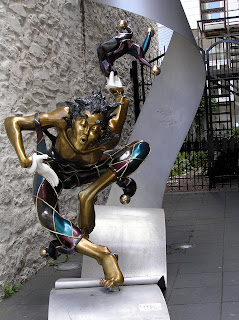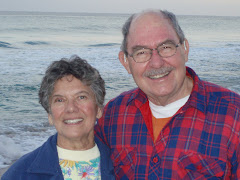
We are in Hancock, New Hampshire again.
The leaves are just beginning to change. Around swamps and brooks there are lower story trees. such as grey birches and willows, with lots of red leaves Although there is a lot of color about the bogs and swamps, the setting is usually not conducive to a good photograph. The picture beside this writing, however, gives you an idea of what we see.
Along the roads and at the edges of fields the maples are starting to turn with trees exhibiting scarlet, yellow, and a really beautiful burnt orange (yellowish-red) color. We have delayed leaving for another week, so we should see a better exhibition of color in a few days.

New England is really very picturesque. Nearly every town has a church with a steeple reaching into the sky. One of the more beautiful churches is the old Meeting House/Congregational Church in Hancock, the town in which we are staying.
The building is a combination meeting house and church, and according to a sign next to the church it was built in 1829 and moved in 1854. It is said, that the bell in the tower was cast by Paul Revere.
This combination of church and state, in one form or another, is not too uncommon in New Hampshire towns. In my home town, the town hall was downstairs and the church was upstairs. Te building was owned by the town, and the church rented to the members. Unfortunately, in recent times there has developed animosity between townspeople and the church, and a schism within the church. The members have left the building, so an empty church remains upstairs with a town hall, downstairs used for community functions such as town meetings.

Every town has cemeteries, of course. In New England towns, an old cemetery in the middle of town is a common sight. These are usually kept up fairly well and the old lichen covered marble headstone are quite picturesque. Below I have included a photograph of a cemetery in the center of Hancock.
 We have extended our stay another week. The Yankee Siege is going to start their Trebuchet up on Saturday, practicing in anticipation of the Punkin Chunkin contest. See www.yankeeseige.com.
We have extended our stay another week. The Yankee Siege is going to start their Trebuchet up on Saturday, practicing in anticipation of the Punkin Chunkin contest. See www.yankeeseige.com.





